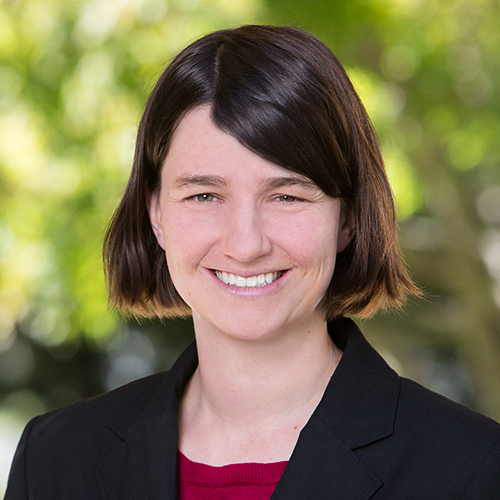International aid improves millions of people’s health and wellbeing. We think it can do even more.

Global Aid Policy
We’re working to create a future where wealthy countries give more aid to other countries in ways that help more people survive and thrive.
International aid has helped save millions of lives, reduce poverty, and increase prosperity for millions of people throughout the past century. But there is still more to do. At the end of 2022, more than 8% of the world’s population — as many as 670 million people — were thought to be living on less than $2.15 per person per day. If trends continue, we will not achieve the global goals of ending global poverty and significantly improving health and well-being by 2030.
We launched our Global Aid Policy program in early 2022 to support efforts to increase government aid and guide it toward more cost-effective approaches that can improve people’s health and well-being.
We focus our new, relatively small resources in ways we believe complement other donors and can go especially far:
- Increasing aid budgets, especially for multilateral health organizations operating in low-income countries.
- Improving existing aid programs by helping leaders draw on evaluations and technical analysis.
- Using our flexible resources creatively to accelerate progress.

Why aid policy?
1. We can’t do it alone. The sheer scale of the problem — 8 out of every 100 people in the world live in extreme poverty — demands our attention and is too much for anyone to tackle alone.
2. More dollars, more potential impact. The amount of aid governments provide far exceeds what private philanthropy can give directly. In 2022, rich country governments provided $204 billion in overseas development assistance for health, water & sanitation, education, energy, and more. But this was just 0.36% of these countries’ gross national income.

3. We think countries can give more, and there are ways aid can do more. Rather than fund direct service delivery, we look for opportunities for our flexible resources to grow aid budgets and increase the impact of existing programs so more people can live longer, healthier lives.
Our Approach
We’re a new player in aid policy. Our approach is shaped by colleagues in government agencies, ministries, multilateral institutions, and private philanthropy who are generous with their time and insights. We believe our resources can be most effective in donor countries and on topics that don’t get as much attention from other donors, or in areas that other donors aren’t able to fund. We are open to any approach that could catalyze more aid financing and increase the impact of existing aid to improve more lives.
Goals
1. Avoid cuts, and when possible, increase international aid budgets. We fund efforts to:
- Avoid cuts, such as the faith-based development organization Diakonia’s work to maintain aid spending in Sweden.
- Increase budgets, such as the Joep Lang Institute’s work to encourage emerging donors in Eastern Europe and South America to support global health multilaterals.
- Build right-of-center support for aid, such as Civita’s work to create and discuss development policy recommendations with conservative Norwegian lawmakers.
We focus on donor countries where the amount of spending on aid advocacy is small compared to the size of the aid budget.
2. Increase funding to especially impactful programs, including multilateral global health efforts in select donor countries. Japan and Korea are among the donor countries that have increased official development assistance in the last decade and where aid advocacy and policy engagement is poorly funded. Our grants in these kinds of donor countries aim to:
- Strengthen policy advocacy for larger aid budgets and especially for high-impact global health programs like the Global Fund, global vaccine partnerships like GAVI and CEPI, and other efforts to fight neglected tropical diseases.
- Expand advocacy efforts from nontraditional voices, like those of the Japanese youth advocacy incubator PoliPoli.
- Work with partners like Malaria No More to build international momentum to co-invest in fighting malaria and other public health problems.
3. Spur cross-cutting improvements in existing programs. Our funding in this area aims to identify ways programs and projects — especially highly impactful health programs — can be, say, 20% better. We’ve made grants to:
- The International Rescue Committee to generate cost-efficiency evidence for existing programs run by a network of NGOs (e.g., how the number of households reached and results vary based on the approach to service delivery). This helps participating NGOs and the aid agencies they work with determine how to increase impact — for example, how to reach more people with the same level of funding.
- Support the work of USAID’s new Office of the Chief Economist, which is tasked with generating and using cost-effectiveness evidence from impact evaluations and economic analysis across the agency’s decision-making.
Playing to our strengths to complement others and accelerate progress
Open Philanthropy can support a wide range of organization types and individuals. We make grants to charitable 501c3 organizations; social welfare 501c4 organizations that are permitted to do some political activities; and universities, international organizations, and individuals. We’re not limited to specific countries or sectors.
We aim to use our flexible funding as a comparative advantage to support the most impactful opportunities, including great people, cutting-edge technical work, and efforts to build trusted relationships between stakeholders inside and outside government. We look for ways to complement efforts from private charitable foundations and aid agencies, and can pay for items that are difficult or impossible for aid agencies to pay for directly. This can include additional staff, consultants, or data systems for select parts of government — or even executive assistants or teaching buyouts to enable people to put more time into their work.
The following Open Philanthropy staff oversee the Global Aid Policy program.
Global Aid Policy, at a glance
-
50+ Grants
Made -
$28+ Million
Given
